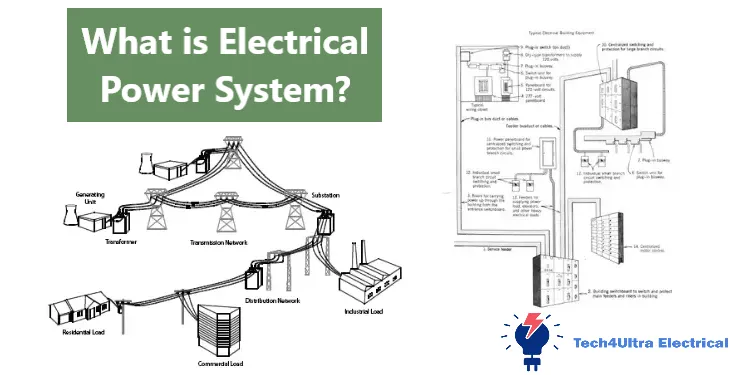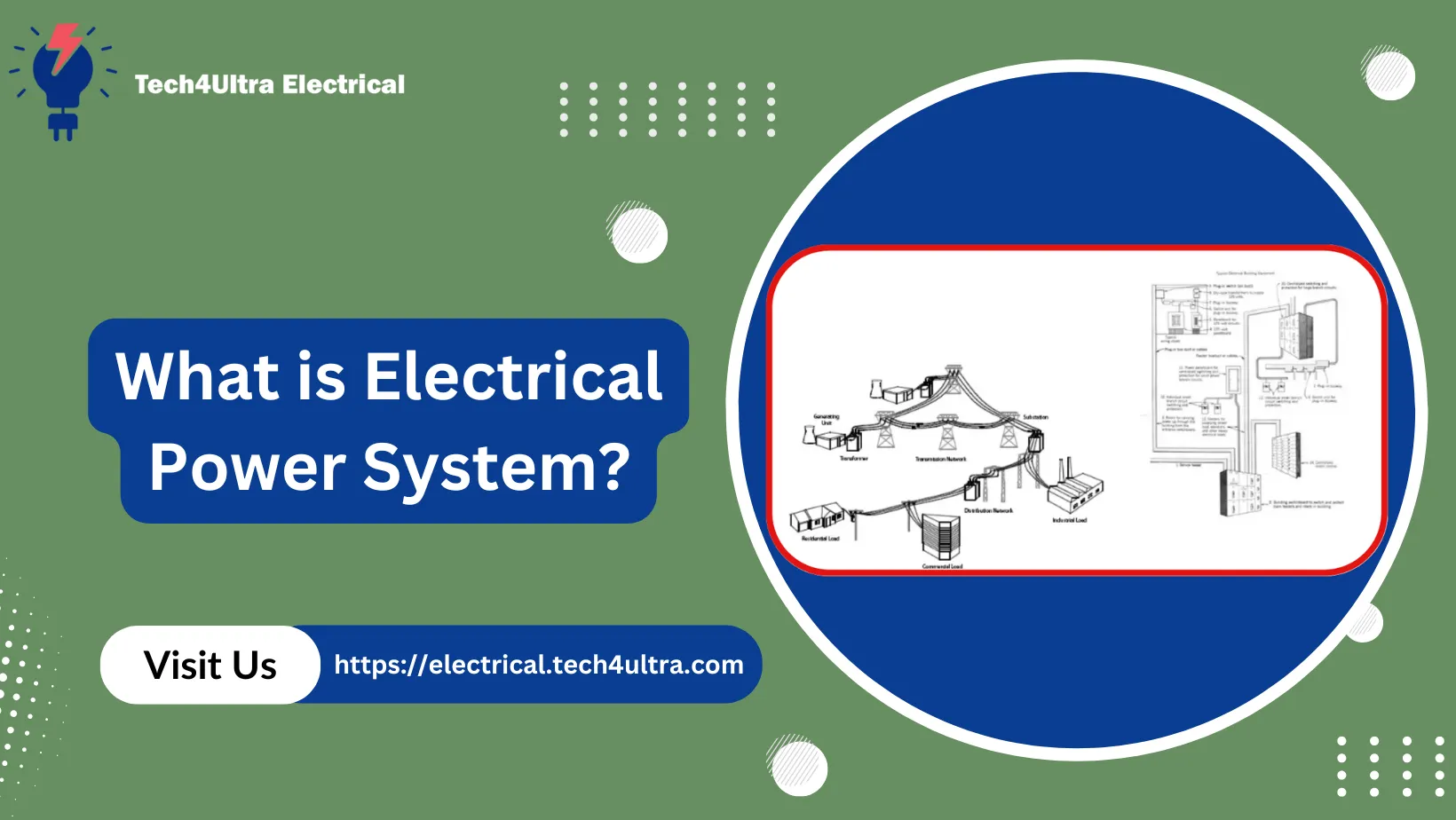Contents
Have you ever wondered how our homes and factories stay powered 24/7, even during storms and outages? That’s the magic of the Power System at work. In this article on the Tech4Ultra Electrical website, you’ll discover how the Electric Power System operates behind the scenes and how the Electrical Grid seamlessly delivers electricity everywhere. You’ll walk away with a clearer understanding of how these systems work—and why they’re essential to modern life.

What is an electric power system?
An electric power system is the invisible backbone of modern civilization. It’s a complex network designed to generate, transmit, and distribute electricity to homes, industries, and institutions. Without it, your morning coffee, your laptop, and even traffic lights wouldn’t function. At its core, a power system starts with energy generation—whether from fossil fuels, nuclear, or renewables—and ends with delivery to the end user through a system of transmission lines and transformers.
Importance in modern infrastructure
Imagine a city without a stable electrical grid. Hospitals would lose power, water pumps would fail, and communication systems would go dark. The electric power system is what enables everything from internet access to transportation systems. It powers innovation, healthcare, commerce—literally the rhythm of daily life. Governments and engineers alike treat the electrical grid as critical infrastructure, on par with roads and water systems.
Brief mention of types: centralized and decentralized systems
Electric power systems typically fall into two categories: centralized and decentralized. Centralized systems rely on large power plants that distribute energy over long distances, while decentralized systems—like solar panels and microgrids—generate power closer to the point of use. Each has its own advantages and challenges, and both play a vital role in the future of global energy.
Read Also: What Is an Electrical Grid System? Structure, Components, and Advantages Explained
Core Components of a Power System
Generators (Alternators): types, voltage levels
Every power system starts with electricity generation. Generators, often called alternators, convert mechanical energy into electrical energy. They come in various types—hydroelectric, thermal, wind, and more—each tailored to specific energy sources. These generators typically produce electricity at medium voltage levels, often around 11 to 33 kV, depending on the capacity and type. This is the first critical step in the electric power system.
Transformers: step-up and step-down
Once electricity is generated, it needs to be transported efficiently. That’s where transformers come in. Step-up transformers raise voltage levels to minimize energy loss over long distances, while step-down transformers reduce voltage to safer levels suitable for homes and businesses. Transformers are essential in ensuring the smooth transfer of power within the electrical grid.
Transmission Lines: overhead vs underground
Transmission lines carry high-voltage electricity over long distances from power stations to substations. They come in two main forms: overhead and underground. Overhead lines are more common due to lower installation and maintenance costs, but they are vulnerable to weather and environmental damage. Underground lines offer more stability and aesthetics, especially in urban areas, though they come with higher installation costs.
Substations: generation and transmission types
Substations act as control centers within the electric power system. Generation substations connect generators to the grid, while transmission substations manage voltage regulation and routing. These facilities house transformers, breakers, and protective relays, playing a key role in system reliability and safety.
Distribution networks: primary vs secondary
After electricity passes through substations, it enters the distribution network. This network is divided into primary (medium voltage) and secondary (low voltage) systems. Primary distribution typically ranges from 4 kV to 33 kV and serves larger loads or transformers, while secondary systems deliver 120 to 480 volts directly to homes and small businesses.
Load centers and consumer points
The final destination in a power system is the load center—the locations where electricity is actually consumed. These include residential homes, commercial buildings, factories, and schools. Each consumer point has meters, circuit breakers, and service panels that ensure safe and reliable usage of the electricity delivered through the electrical grid.
Watch Also: Sources of Electrical Energy: Types and How They Work
Power Generation and Voltage Levels
Why low voltage generation is used
In most electric power systems, electricity is initially generated at relatively low voltages, typically ranging from 11 kV to 33 kV. This isn’t due to inefficiency, but rather a practical design choice. Generating electricity at low voltage allows for better control over the generator’s insulation, winding size, and thermal management. These factors help extend the life of the generators and keep costs manageable.
Advantages for alternator design
Alternators are designed to operate optimally at these lower voltage levels because it simplifies the insulation requirements and reduces internal stresses. Lower voltages mean thinner conductors and less stress on winding insulation, which reduces manufacturing complexity and increases system reliability. This design approach ensures that the alternator remains efficient while maintaining long-term durability in the power system.
Limitations of low voltage transmission
However, transmitting power over long distances at low voltage is highly inefficient due to significant energy loss in the form of heat. This is why step-up transformers are essential—they increase the voltage before the power enters the electrical grid, minimizing line losses and allowing for efficient long-distance transmission. High-voltage transmission is a key element of modern electric power systems.
Overview of generation technologies (fossil, hydro, renewable)
Electricity can be generated using a variety of technologies. Fossil fuel-based plants, such as coal and gas, are still common in many regions. Hydroelectric plants utilize water flow to drive turbines and are highly efficient in suitable locations. Renewable sources like solar and wind are increasingly popular due to their sustainability, though they often require decentralized systems. Each method integrates differently into the power system, influencing how the electrical grid is structured and managed.
Voltage Regulation and System Efficiency
Voltage regulation strategies
In any well-designed electric power system, maintaining consistent voltage levels is essential for stability and performance. Voltage regulation strategies include on-load tap-changing transformers, automatic voltage regulators, and reactive power compensation devices like capacitor banks and reactors. These methods help balance voltage across the electrical grid, especially during fluctuating demand or supply conditions.
Surge impedance loading
Surge impedance loading (SIL) is a key concept in high-voltage transmission. It defines the load at which a transmission line operates at maximum efficiency without the need for reactive power compensation. Operating near SIL ensures minimal voltage drop and improved line stability, which is vital for long-distance energy transport within the power system.
Transformers’ role in minimizing losses
Transformers play a dual role in voltage regulation and loss minimization. By stepping up voltage levels for transmission and stepping them down for distribution, transformers reduce current flow, which directly lowers resistive losses in conductors. This efficient voltage conversion is fundamental to energy conservation across the electric power system.
Impact on power quality and safety
Effective voltage regulation improves power quality by preventing over-voltage and under-voltage conditions. Stable voltage protects sensitive consumer equipment, enhances system safety, and reduces the risk of outages. A well-regulated electrical grid ensures both energy efficiency and the reliable delivery of electricity to all load centers.
Transmission System in Depth
High voltage transmission importance
In a modern electric power system, high voltage transmission is the backbone of efficient energy delivery. Transmitting electricity at high voltages—often ranging from 110 kV to over 765 kV—significantly reduces energy losses due to resistance in the lines. This allows the electrical grid to deliver massive amounts of power over long distances without wasting energy, making it both cost-effective and reliable.
Economic rationale for remote generation
Most large-scale power system generators, especially hydroelectric and thermal power plants, are located far from load centers due to environmental, logistical, or resource-based reasons. High voltage transmission lines make it economically viable to generate power in these remote locations and deliver it efficiently to urban areas. This approach minimizes land use conflicts, takes advantage of geographic resources, and lowers generation costs.
Step-up substations and insulation challenges
At the heart of this long-distance delivery are step-up transformers located in substations near power plants. These substations increase the generated voltage to transmission levels. However, higher voltage means greater insulation challenges. Components must withstand elevated electric fields, which require advanced insulating materials and strict safety standards to prevent breakdowns and ensure stability within the electric power system.
Grid interconnectivity and redundancy
A resilient electrical grid depends heavily on interconnectivity and redundancy. Interconnected transmission networks enable power to flow across regions, providing backup routes in case of equipment failure or peak demand. Redundancy enhances system reliability, ensures continuity of supply, and supports the integration of decentralized and renewable energy sources into the broader power system. It’s what makes the grid adaptive and less vulnerable to local disturbances.
Distribution and Load Management
Stepping down voltage for usage
After electricity travels long distances through high-voltage transmission lines, it enters the distribution stage of the electric power system. Here, step-down transformers reduce voltage levels to values safe for residential, commercial, and industrial use—typically between 120V and 480V. This voltage adjustment ensures that end users receive power that’s both efficient and safe for their devices.
Load balancing and peak demand
A critical aspect of managing the electrical grid is load balancing—distributing power evenly to avoid overloads. Operators monitor real-time demand and adjust supply accordingly to handle peak periods, such as evening hours or hot summer days. Effective load management keeps the power system stable, reduces the risk of blackouts, and improves energy efficiency.
Smart grids and modern technologies
The evolution of smart grid technology has transformed how we manage distribution. Using sensors, automation, and real-time data analytics, smart grids allow for dynamic control of power flow, rapid fault detection, and optimized energy usage. These systems improve both the resilience and responsiveness of the electric power system.
Integration with renewable energy
As more solar panels, wind turbines, and small-scale renewables connect to the electrical grid, distribution systems are adapting. Smart inverters and advanced metering infrastructure help balance variable inputs, ensuring that renewables integrate smoothly into the existing power system. This shift supports sustainability while maintaining reliability.
Protection, Control, and Auxiliary Equipment
Circuit breakers and isolators
In every electric power system, protection devices are essential to prevent damage during faults. Circuit breakers are the first line of defense—they automatically disconnect the faulty section by interrupting current flow during short circuits or overloads. Isolators, on the other hand, are manually operated and used to safely isolate equipment during maintenance. Both are crucial for ensuring the safety and reliability of the electrical grid.
Lightning arrestors and grounding
Lightning arrestors protect transmission and distribution infrastructure by diverting high-voltage surges from lightning strikes safely to the ground. This works in conjunction with a robust grounding system, which provides a low-resistance path to dissipate electrical energy. Proper grounding is vital for the protection of both equipment and personnel in the power system.
Relays and control systems
Relays are intelligent sensors that detect abnormalities such as overcurrent, undervoltage, or phase imbalance. When triggered, they activate circuit breakers to isolate the problem area. These are integrated into centralized control systems, which oversee grid operations and issue automated responses to maintain system balance and prevent cascading failures.
CTs, VTs, CVTs, wave traps
Instrument transformers like Current Transformers (CTs) and Voltage Transformers (VTs) are used to scale down high voltages and currents to manageable levels for monitoring and protection. Capacitor Voltage Transformers (CVTs) offer similar functions for high-voltage transmission. Wave traps, installed on transmission lines, block high-frequency communication signals from entering unwanted parts of the system, ensuring clear and reliable grid communication.
SCADA and automation systems
Modern electric power systems rely heavily on SCADA (Supervisory Control and Data Acquisition) systems. These platforms collect real-time data, control remote substations, and provide operators with insights for decision-making. SCADA, along with automation systems, forms the digital brain of the electrical grid, enabling smarter, faster, and more resilient power delivery.
Specialized and Industrial Power Systems
Power systems in transport (rail, aircraft, ships)
Not all electric power systems serve cities and factories. Specialized systems power critical transport infrastructure like electric railways, aircraft, and marine vessels. Rail networks often use dedicated substations and overhead lines, while aircraft rely on onboard power systems to support avionics, lighting, and engine controls. Ships operate isolated electrical grids that must be compact, robust, and capable of handling both propulsion and auxiliary services.
Industrial microgrids and backup systems
Large industrial facilities frequently operate their own power systems known as microgrids. These systems can function independently or connected to the main electrical grid, offering greater reliability and control over energy use. Industries often include backup generators and UPS systems to ensure continuous power during grid failures, minimizing downtime and protecting sensitive equipment.
Hospitals, data centers, critical loads
Facilities like hospitals and data centers are considered critical loads—they cannot afford power interruptions. These sites use specialized electric power systems with layered redundancy, including diesel generators, battery banks, and automatic transfer switches. The goal is to ensure zero downtime and seamless transition between sources. In such environments, power quality and reliability are just as important as availability.
Watch Also: System of Wiring: Types, Uses, and Tips
Challenges and Future of Power Systems
Grid stability and blackouts
One of the major concerns for any electric power system is grid stability. A sudden imbalance between supply and demand can trigger cascading failures, leading to widespread blackouts. Aging infrastructure and increasing load demand put added pressure on the electrical grid, making stability and real-time response more crucial than ever.
Integration with renewable energy
As solar, wind, and other renewables take a larger share of the energy mix, integrating them into the power system poses unique challenges. Their intermittent nature requires advanced control systems, storage solutions, and flexible grid infrastructure to maintain a steady power flow. While renewable integration supports sustainability, it also demands a smarter and more adaptable electrical grid.
Electrification trends and smart distribution
The global shift toward electrification—driven by electric vehicles, heat pumps, and smart homes—is increasing demand on distribution systems. This trend calls for intelligent, digitalized distribution networks that can handle bidirectional flows and real-time data analytics. Smart meters, demand-side management, and automation will become essential components of tomorrow’s power system.
Cybersecurity and digital threats
With growing reliance on SCADA and cloud-based grid management, electrical grids are becoming more vulnerable to cyberattacks. A successful breach can disrupt operations, damage equipment, or compromise data. Therefore, cybersecurity is now as vital as physical security, requiring encryption, firewalls, and continuous monitoring to protect the digital backbone of the electric power system.
Conclusion
The electric power system is a complex yet essential structure that powers every aspect of modern life. From generation to distribution, each component plays a vital role in ensuring electricity reaches consumers safely and efficiently. Whether it’s a rural home or a bustling data center, the electrical grid is what keeps it running.
Efficient design, regular maintenance, and the integration of smart technologies are key to a resilient and reliable power system. These practices minimize losses, improve power quality, and prepare the grid for future demands.
As the world moves toward sustainability, well-managed electric power systems are crucial for supporting renewable energy, electrification, and economic growth. Understanding and improving these systems is not just a technical challenge—it’s a step toward a more sustainable and connected future.
FAQs
What is the basic of electrical power system?
The basic of an electrical power system involves three main components: generation, transmission, and distribution. Electricity is generated in power plants, transmitted over long distances via high-voltage lines, and then distributed to end users at lower voltages. This entire structure forms the foundation of a modern power system.
What are the basics of electric systems?
Electric systems are built around key concepts like voltage, current, resistance, and power. At a larger scale, an electric power system includes equipment like generators, transformers, transmission lines, and load centers. These elements work together to ensure reliable delivery of electricity through the electrical grid.
What is the definition of power in electrical system?
In an electrical system, power is defined as the rate at which electrical energy is transferred by an electric circuit. It is measured in watts (W) and is calculated using the formula: Power = Voltage × Current. Understanding power is essential for analyzing the performance of a power system.
What is the meaning of electrical system?
An electrical system refers to a network of interconnected components designed to generate, transmit, distribute, and utilize electrical energy. This system can range from small residential setups to large-scale electric power systems that supply entire cities through an integrated electrical grid.


1 thought on “Impedance Matching Explained: Techniques, Formulas, and Real-World Applications”